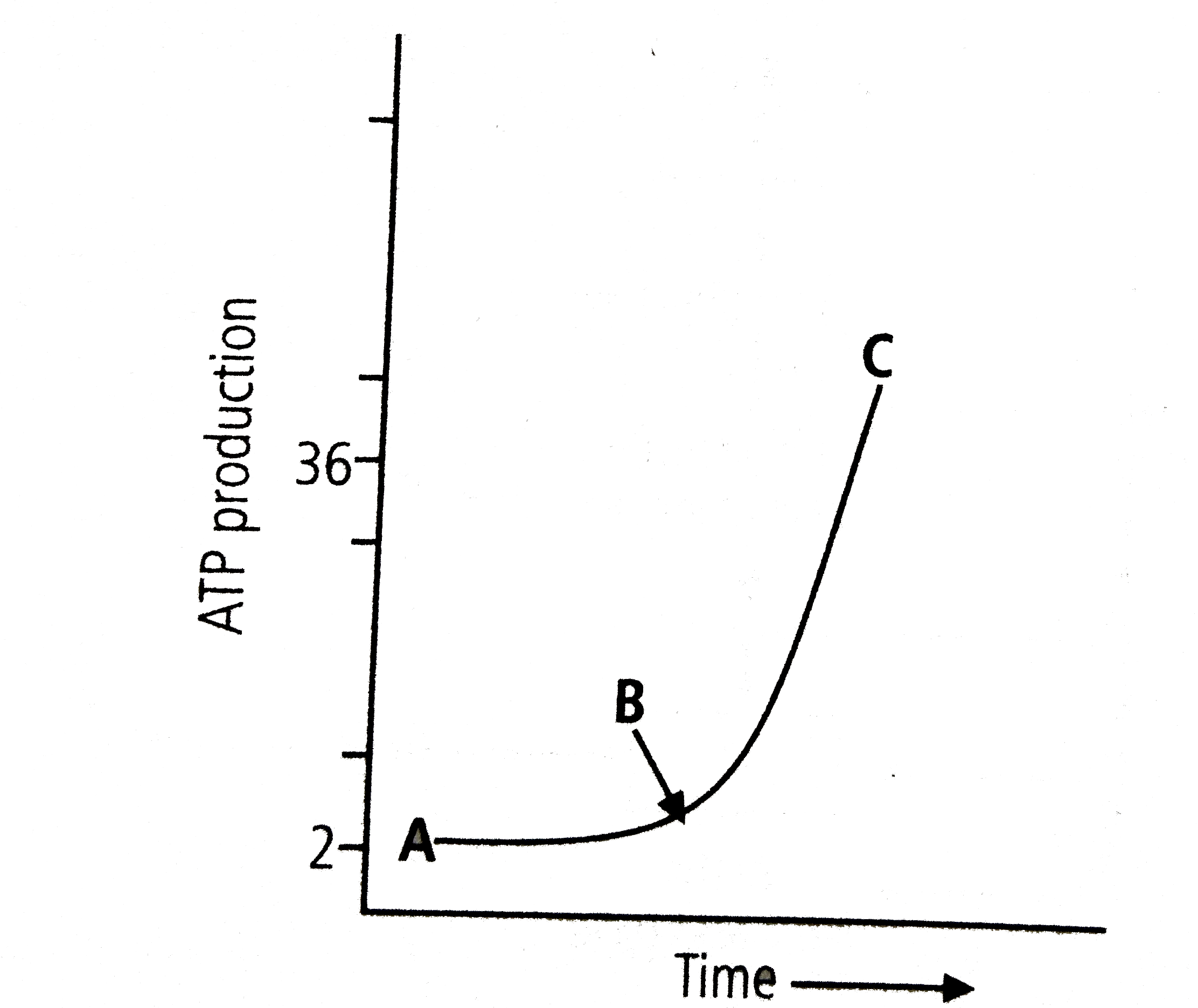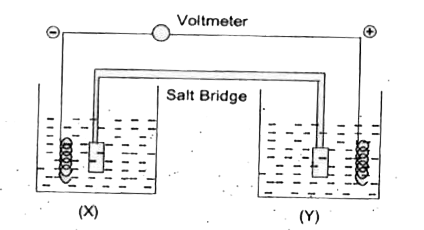A mass of living cells are kept in a culture medium under anaerobic conditions. The cells were supplied with labelled c14 glucose. Pick up the true statement
CO2 will contain C14
cell would burst
water will have radioactivity
ATP will have radioactivity
The correct Answer is:A
Step by step video, text & image solution for A mass of living cells are kept in a culture medium under anaerobic conditions. The cells were supplied with labelled c^14 glucose. Pick up the true statement by Biology experts to help you in doubts & scoring excellent marks in Class 12 exams.
Topper's Solved these Questions
Similar Questions
Answer question numbers on the basis of your understanding of the following paragraph and the related studied concepts :
In tissue culture, new plants are grown by removing tissue or separating cells from the growing tip of a plant. The cells are then placed in an artificial medium where they divide rapidly to form a small group of cells or callus. The callus is transferred to another medium containing hormones for growth and differentiation. The plantlets are then placed in the soil so that they can grow into mature plants. Using tissue culture, many plants can be grown from one parent in disease-free conditions. This technique is commonly used for ornamental plants.

From step B C, there is cell differentiation involved, which has led to formation of a complete plantlet ? Explain how is this achieved.View SolutionIdentify the statements as true(T) or false(F).
A. Xylem fibres are the components of xylem in all categories of vascular plants.
B. Advanced angiosperm families like Winteraceae & Trochodendraceae do not have vessals.
C. Seive tubes & companion cells are ontogenetically related & are called sister cells.
D. The cytoplasm of a mature seive tube occurs in the form of a thin-living layer along the inner side of cell walls.View Solution
Knowledge Check
- Question 1 - Select One
the number of glucose molecules required to produces 38 ATP molecules under anaerobic conditions by a yeast cells is
A2B4C19D38 - Question 2 - Select One
The number of glucose molecules required to produce 38 ATP molecules under anaerobic condition by a yeast cell is
A2B4C19D24 - Question 3 - Select One
Animal cells are suspended in a culture medium that contains excess glucose. The graph below shows glucose utilisation under different growth conditions (A),(B), and (C) in the graph indicate
 AA-Anaerobic respiration
AA-Anaerobic respiration
B-Introduction of O2 to culture medium
C- Aerobic respirationBA-Aerobic respiration
B-Introduction of O2 to culture medium
C- Anaerobic respirationCA-Aerobic respiration
B-Supply of organic triphosphate
C-Aerobic respirationDA-Aerobic respiration
B-Introduction of CO to culture medium
C-Anaerobic respiration.
A scientist was studying the production of a protein that was released by an animal cell into a culture medium, she found that the protein only appeared in the culture medium after the added a few drops of a hormone to the cell. Before adding the hormone, she labelled the protein inside the cell with a fluorescent dye and looked at the cell under the lgiht microscope. The dye was seen in flattened sheets and tube. like structures throughout the cell, and in stacks of flattened sac-like structures. after adding the hormone, the dye was aslo seen as small dots clustered against the cell membrane, Which statement most likely explains these observations?
View SolutionThe cell potential for the unbalanced chemical reaction:
Hg2+2+NO−3+H3O+→Hg2++HNO2+H2O+e−

Is measured under standard conditions in the electrochemical sell shown in the diagram were
Choose the correct statement for the given cell diagramView SolutionI. Nitrogenase is only catalytic under anaerobic conditions
II. The energy for nitrogen fixation can be provided by respiration of the host cells
III. In nitrogen fixation, nitrogen is reduced by the addition of 3 successive pairs of hydrogen
IV. Within a nodule, O2 levels are kept low.
V. Many living organisms can utilize the nitrogen in the form of N2 , available abundantly in air.View SolutionA fuel cell is a cell that is continously supplied with an oxidant and a reductant so that if can deliver a current indefinitely.
Fuel cells offer the possibility of achieving high thermodynamic efficiency in the conversion of Gibbs energy into mechanical work.Internal combustion engines at best convert only the fraction (T2−T1)/T2 of the heat of combustion into mechanical work.
While the thermodynamic efficiency of the fuel cell is given by, η=ΔGΔH, where ΔG is the Gibbs energy change for the cell reaction and ΔH is the enthalpy change of the cell reaction.A hydrogen-oxygen fuel cell may have an acidic or alkaline electrolyte.
Pt|H2(g)|H+(aq.)||H2O(l)|O2(g)|Pt,2.303RTF=0.06
The above fuel cell is used to produce constant current supply under constant temperature & 30 atm constant total pressure conditions in a cylinder.If 10 moles H2 and 5 moles of O2 were taken initially.
Rate of consumption of O2 is 10 milli moles per minute. The half-cell reactions are
12O2(g)+2H+(aq)+2e−→H2O(l)E∘=1.246V
2H+(aq)+2e−→H2(g)E∘=0
To maximize the power per unit mass of an electrochemical cell, the electronic and electrolytic resistances of the cell must be minimized.Since fused salts have lower electolytic resistances than aqueous solutions, high-temperature electrochemical cells are of special interest for practical applications.
The above fuel cell is used completely as an electrolytic cell with Cu voltameter of resistance 26.94Ω using Pt electrodes. Initially Cu voltameter contains 1 litre solution of 0.05MCuSO4[H+] in solution after electrolysis (Assuming no changes in volume of solution.)View SolutionA fuel cell is a cell that is continously supplied with an oxidant and a reductant so that if can deliver a current indefinitely.
Fuel cells offer the possibility of achieving high thermodynamic efficiency in the conversion of Gibbs energy into mechanical work.Internal combustion engines at best convert only the fraction (T2−T1)/T2 of the heat of combustion into mechanical work.
While the thermodynamic efficiency of the fuel cell is given by, η=ΔGΔH, where ΔG is the Gibbs energy change for the cell reaction and ΔH is the enthalpy change of the cell reaction.A hydrogen-oxygen fuel cell may have an acidic or alkaline electrolyte.
Pt|H2(g)|H+(aq.)||H2O(l)|O2(g)|Pt,2.303RTF=0.06
The above fuel cell is used to produce constant current supply under constant temperature & 30 atm constant total pressure conditions in a cylinder.If 10 moles H2 and 5 moles of O2 were taken initially.
Rate of consumption of O2 is 10 milli moles per minute. The half-cell reactions are
12O2(g)+2H+(aq)+2e−→H2O(l)E∘=1.246V
2H+(aq)+2e−→H2(g)E∘=0
To maximize the power per unit mass of an electrochemical cell, the electronic and electrolytic resistances of the cell must be minimized.Since fused salts have lower electolytic resistances than aqueous solutions, high-temperature electrochemical cells are of special interest for practical applications.
Calculate e.m.f of the given cell at t=0.(log 2=0.3)View Solution

